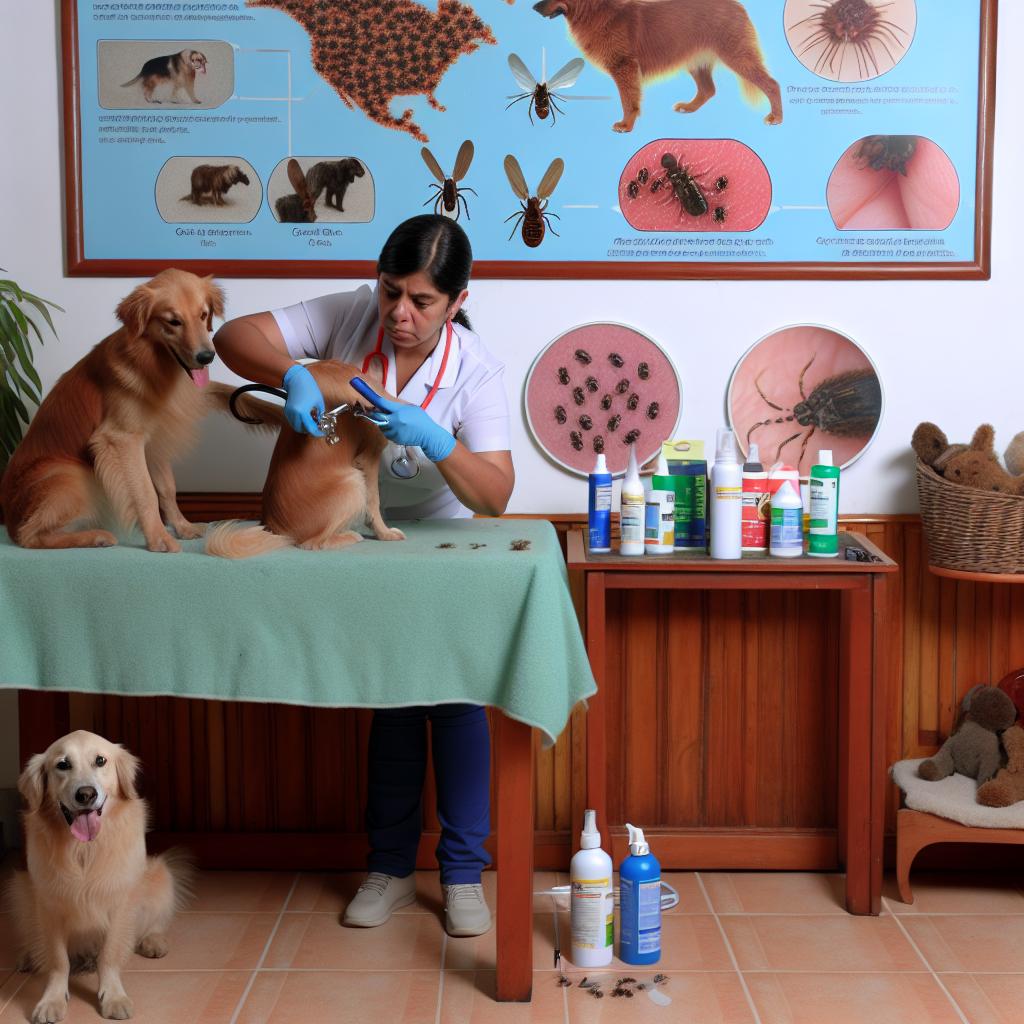
Fleas and ticks represent two of the most common external parasites that affect dogs. These tiny creatures can lead to a multitude of health issues and inconvenience for both pets and their owners. Understanding their nature, behaviors, and the threats they pose is the first crucial step in effective prevention and management.
Fleas are wingless insects that thrive on the blood of animals. These insidious pests may seem small and insignificant, but they can cause a range of problems from mere irritations to more significant health concerns. Fleas are notorious for provoking intense itching and allergic reactions in dogs. Particularly susceptible dogs might develop flea allergy dermatitis, a condition that leads to severe itching and skin infections. Moreover, fleas are capable carriers of diseases, transmitting various pathogens from one host to another.
Conversely, ticks are a type of arachnid and not insects. They attach themselves to their host’s skin through a biting process, feeding on the host’s blood. This feeding not only weakens the affected dog but also provides a perfect opportunity for disease transmission. Ticks are vectors for numerous serious diseases including Lyme disease and Rocky Mountain spotted fever, both of which can have debilitating effects on dogs and even be transmitted to humans. Identifying and understanding these pests mark the initial step toward comprehensive prevention and treatment strategies.
A thorough understanding of signs of infestations is pivotal to managing and mitigating the impact on your pet. Dogs manifest specific symptoms that can indicate the presence of fleas or ticks. Observing any abrupt behavioral changes can be very telling.
One of the most recognizable signs of a flea infestation is incessant scratching. Dogs might also engage in persistent biting or licking of certain areas, seeking some degree of relief from the irritation caused by fleas. Upon closer inspection, you might notice the presence of flea dirt in your dog’s fur. This dirt resembles tiny black specks, similar to ground black pepper, and is essentially flea excrement.
Tick infestations usually require a more hands-on examination approach. Ticks can vary in size, especially depending on whether they have fed. Regularly check your dog’s skin, paying close attention to specific areas where ticks commonly attach, such as around the ears, neck, and between the toes. Identifying any small lumps can clue you into a tick that has latched onto your dog’s skin, either flat when unfed or engorged after feeding.
When it comes to fleas and ticks, prevention remains far superior to treatment. A multi-pronged approach often proves the most effective strategy to control and prevent these pests from becoming a problem.
Regular Grooming: Regular grooming practices serve as one of the first lines of defense. Besides promoting overall skin and coat health, it aids in the early detection of fleas and ticks. Utilizing a flea comb is a simple but effective way to remove both fleas and flea dirt from your pet’s fur.
Environmental Control: Beyond direct treatments on your dog, managing your indoor environment is equally essential. Routinely cleaning your dog’s bedding and thoroughly vacuuming your home can help eradicate flea eggs and larvae. Moreover, consider implementing flea treatment products designed for home and yard use. These products can create a hostile environment for fleas, reducing the chance of infestations.
Topical Treatments: Applied directly onto the dog’s skin, topical treatments work by repelling and killing fleas and ticks. It is essential to match the treatment product to your dog’s size and weight, ensuring it is both safe and effective.
Oral Medications: Monthly oral medications stand out as another effective preventive measure. These medications actively prevent infestations before they occur. Consultation with a veterinarian can help identify the most appropriate option for your pet, considering possible side effects and efficacy.
In cases where prevention measures fail and an infestation occurs, taking prompt action is critical to alleviating discomfort and preventing further complications.
Immediate Bathing: Bathing your dog with a specifically formulated flea and tick shampoo can offer instant relief from the pests. These shampoos are designed to kill existing fleas and ticks on contact, providing temporary relief from the irritation they cause. Adhering to the product’s instructions is crucial to achieving optimal results and ensuring your pet’s safety.
Spot-on Treatments: These treatments are known for their quick action and ease of application, often involving dispensing the product at the back of the dog’s neck. Spot-on treatments work efficiently by eliminating existing fleas and ticks while also offering preventive effects.
Consult a Veterinarian: For particularly severe infestations, a visit to the veterinarian is advisable. Veterinarians can prescribe medications or suggest additional treatments such as injections to eliminate the pests effectively.
Managing fleas and ticks effectively in the long-term requires a consistent approach, integrating preventive measures with regular monitoring.
Consistent grooming and regular veterinary check-ups form the foundation of long-term management. Regular grooming not only helps identify any new infestations early but also allows for maintaining optimal skin and coat health. Veterinary check-ups ensure that your pet remains in good health, providing opportunities for professionals to check for any signs of infestations and recommend appropriate preventive measures.
Staying well-informed about the signs of flea and tick infestations and acting swiftly when issues arise can make a significant difference in your pet’s health. Engaging with education materials from reputable sources like the American Veterinary Medical Association can provide invaluable insights and guidance.
The combined approach of prevention and prompt treatment ensures the well-being and comfort of your dog. This comprehensive strategy shelters them from the potential health hazards flea and tick infestations pose, ultimately safeguarding their long-term health and enhancing their quality of life.